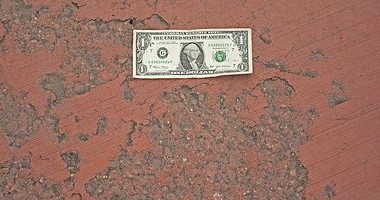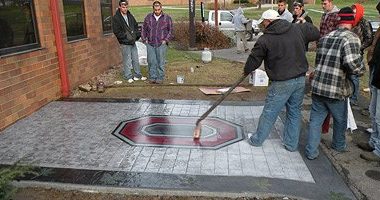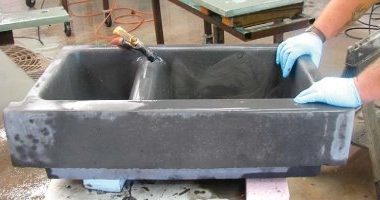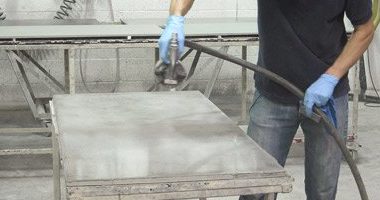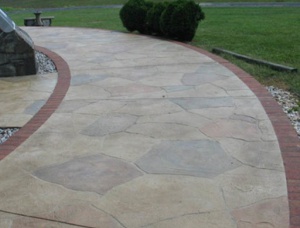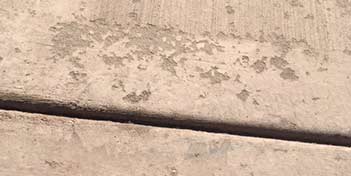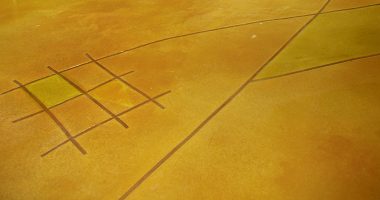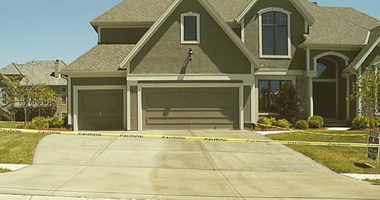Watch out for water, especially in climates where you get cold winters. Water is by far the biggest challenge you will face as a decorative concrete professional. Words like “spalling,” “flaking,” “pitting” or “chipping” are not what people making a living in concrete want to hear. and rarely do these words mean a satisfied customer a profitable month.
Concrete Sealers
Sealers are applied to concrete surfaces to protect them from the elements and extend their useful lifespans. There are two main types of sealers: film-forming varieties that enhance the surface with color and sheen, and penetrating sealers that go into the concrete’s pores and seemingly disappear.
How Can You Minimize Sealer Slipperiness on Concrete?
Using grit additives has become the most common method for reducing slipperiness when sealing decorative concrete flatwork on exterior walking surfaces. The grit additives are mixed into the sealer, then the gritty sealer is applied to the concrete. However, in this situation the weather was too cold to reseal the concrete. So another method needs to be used until springtime arrives and temperatures rise.
Preparing Your Concrete Countertops for Topical Sealers
The steps you take with your wet-cast or GFRC countertops prior to sealing them will affect sealer success more than the actual application of the sealer. It’s important to gain an understanding of what your concrete is doing, or more importantly, what you are doing with your concrete.
A Guide to Using Topical Sealers on Cast Concrete Countertops
There are more choices and considerations with concrete topical sealers than there are with penetrating sealer treatments, and I believe it’s because of this that so many people are confused, frustrated and bewildered. Let me clear up concrete countertop coating confusion
The Difference Between Sealing and Resealing Decorative Concrete
Few things can compare to freshly sealed concrete. Hues of hidden color explode the minute a coat of fresh sealer makes contact with the concrete’s surface. Customers smile with satisfaction and concrete artisans swell with pride.
Spraying Stains and Sealers Can Create Issues
Columnist, Chris Sullivan answers a question about sealers that initially had him stumped. This article works through some answers if this problem ever arrives on your doorstep.
Are Outdoor Concrete Sealers Really Necessary?
If you have done any research on concrete, you have probably noticed that experts recommend using outdoor concrete sealers.
Concrete Expectations: Set the Bar Properly at the Onset
Setting the bar properly for your clients on the onset ensures happier customers in the long run.
Tips to Prepping Heavily Pitted Ceramic Tile Prior to Decorative Concrete Application
If you think that converting 22,000 square feet of flooring from heavily pitted ceramic tile to sleek, glossy, stylish concrete isn’t hard enough, try completing your mission in a “live” supermarket. Take on the added challenge of racing the clock in the middle of the night to get one section completed before the daily load of feet and shopping-cart wheels travels over its still-unfinished and barely dry surface.
An Overview of Sealers: Acrylics, Epoxies, Cure-and-seals and More
Sealers are made from a variety of materials, each with different application and performance characteristics.Learn some if the distinquishing differences and similarities.
